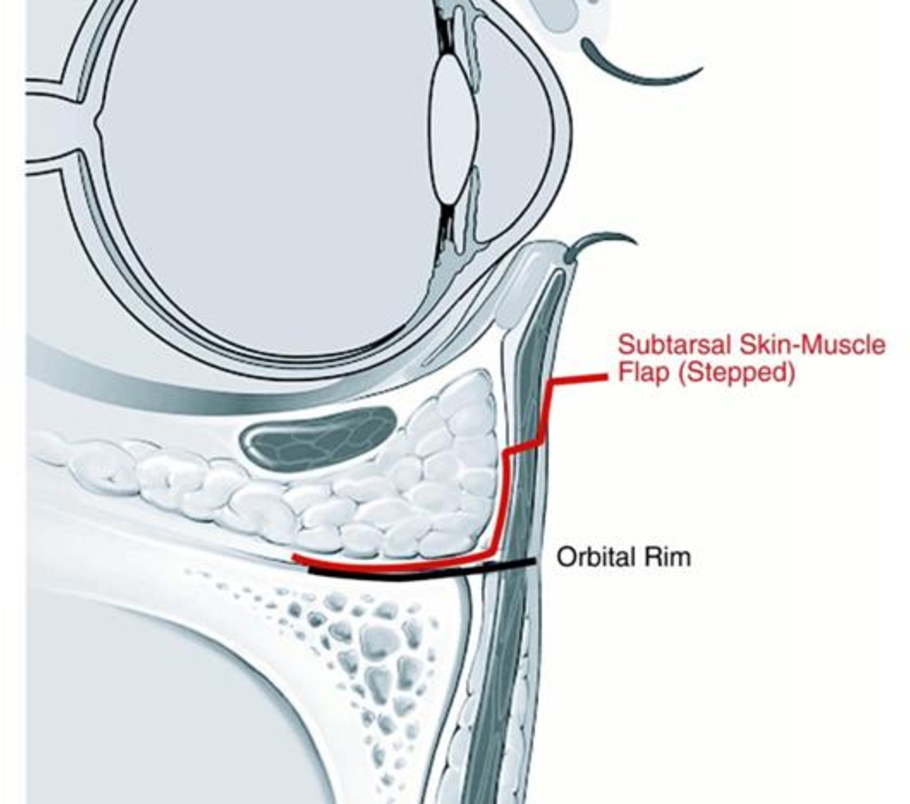Subtarsal Approach Orbital Floor Repair

In addition to the transconjunctival approach the subtarsal incision is one of the most commonly used procedures for surgical exploration of the orbital floor and infraorbital rim.
Subtarsal approach orbital floor repair. The aim of this study was to report our experience about the repair of the orbital floor fractures and new technical findings. However available data are limited regarding validity and long term esthetic and functional outcomes. A re view of 230 cases. Suborbicularis dissection step 4.
Subtarsal approach for orbital floor repair. 1 department of oral surgery oral medicine and periodontology faculty of dentistry university of jordan amman jordan. Subtarsal incision used for orbital rim and floor fracture exploration and management. The study group was comprised of 12 patients 4 females and 8 males ranging in age from 6 to 67 years mean standard deviation 29 19 4 years.
Compared with the subciliary incision there is a lower rate of lower lid retraction. The pattern of maxillofacial fractures in sharjah united arab emirates. Management of orbital floor fractures is still debated and controversial. There was no evidence of oculocardiac reflex and the one patient younger than 18 years did not have evidence of white eyed blow out fracture.
The mean operating time was 13 5 2 7 min for the subciliary approach 10 5 1 9 min for the subtarsal approach and 17 6 2 6 min for the transconjunctival approach with p 0 05. In the literature there are many conflicting reports about classifications type of implant materials and ideal time to perform surgery. Follow up time of examination for the recall visit ranged from 10 to 73 months. Lower eyelid complications can be seen with all three incisional approaches to facial fracture repair.
J oral maxillofac surg 2008. Reconstruction of the orbital floor was carried out with preformed titanium plates in 19 patients and titanium mesh in 16 patients. Skin marking step 2. Subtarsal approach for orbital floor repair.
Baqain zh 1 malkawi z hadidi a rajab ld. Subtarsal approach for orbital floor repair. An evidence based analysis by burnstine et al 3 on clinical recommendations for repair of isolated orbital floor fractures was recently published table 6 none of our patients met the criteria for immediate repair. Based on their findings the authors favor the subtarsal approach for zygomaticomaxillary fractures and the transconjunctival incision for isolated orbital floor fractures.
A long term follow up of 12 cases in a jordanian teaching hospital. Unlike the transconjunctival incision there is no need to perform a lateral canthoplasty to restore canthal integrity.
















